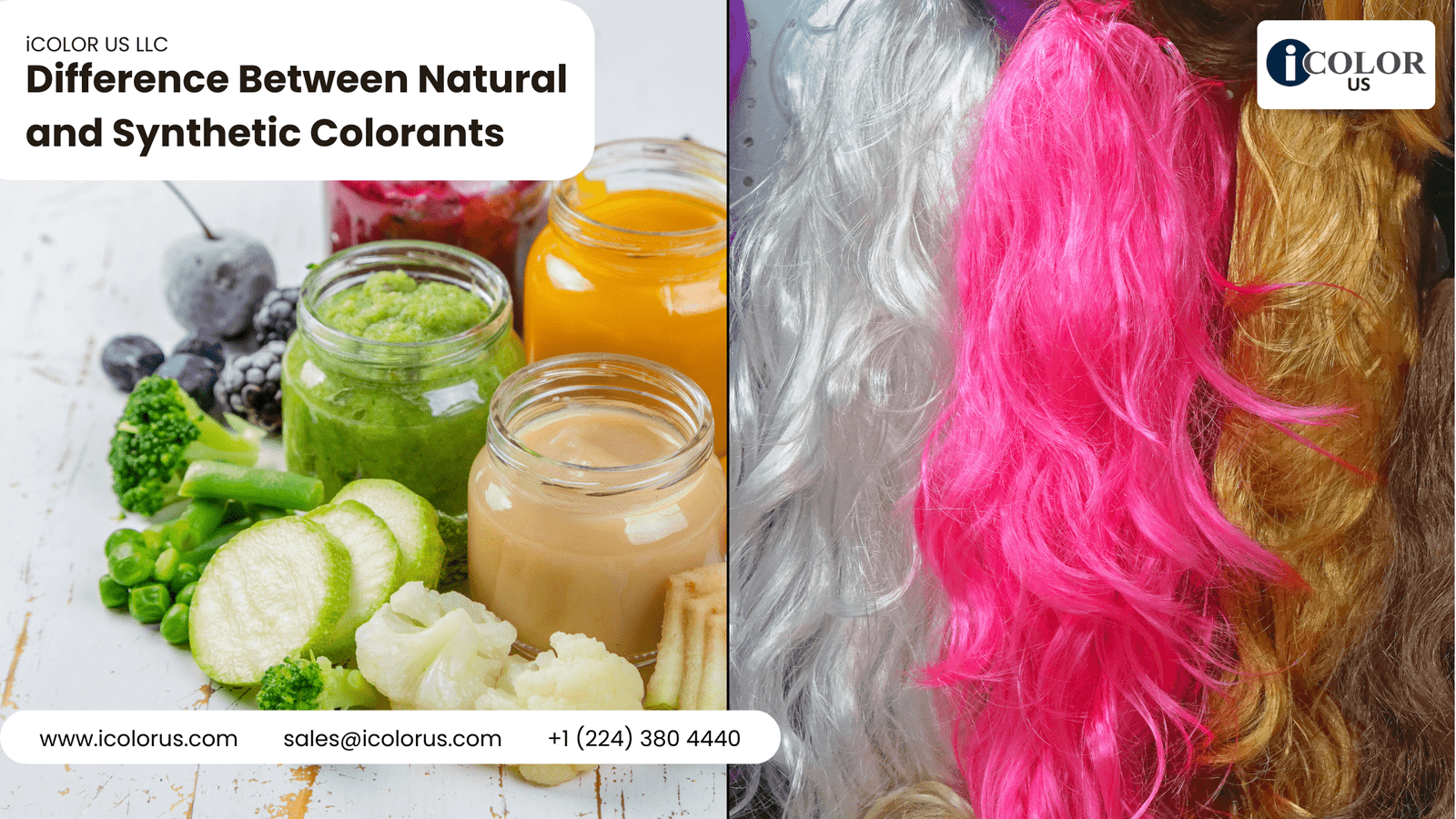The Difference Between Natural and Synthetic Colorants
In the vibrant world of colorants, the choice between natural and synthetic options plays a pivotal role in industries ranging from cosmetics to textiles and pharmaceuticals. Understanding the differences, benefits, and potential drawbacks of each type is crucial for manufacturers, consumers, and regulatory bodies. This article delves into the intricate world of natural and synthetic colorants, providing an in-depth comparison to help you make informed decisions for your products and lifestyle.
Understanding Colorants
Colorants are substances that impart color to a material. They are broadly categorized into two types:
- Natural Colorants: Derived from natural sources such as plants, animals, and minerals.
- Synthetic Colorants: Manufactured through chemical processes, often designed to mimic natural colors or create entirely new shades.
Each type has distinct characteristics, applications, and regulatory considerations.
Natural Colorants
Sources and Types
Natural colorants are extracted from various natural sources:
- Plant-Based Colorants: These include pigments like chlorophyll (green), carotenoids (yellow, orange), anthocyanins (red, purple), and betalains (red, yellow).
- Animal-Based Colorants: Examples include cochineal extract (carminic acid) derived from insects and sepia from cuttlefish.
- Mineral-Based Colorants: Pigments such as iron oxides and ultramarines are obtained from minerals.
Benefits of Natural Colorants
- Health and Safety: Natural colorants are often perceived as safer and healthier alternatives, particularly in the cosmetic industries. Many consumers prefer products with ingredients they recognize and trust.
- Sustainability: Sourced from renewable resources, natural colorants generally have a lower environmental impact compared to synthetic counterparts. They often align with the principles of sustainability and eco-friendliness.
- Regulatory Approval: Natural colorants are typically subject to rigorous safety evaluations but can sometimes navigate regulatory landscapes more easily due to their long history of use.
Challenges of Natural Colorants
- Stability and Consistency: Natural colorants can be less stable than synthetic ones, leading to variability in color intensity and shelf life. Factors such as light, temperature, and pH can affect their stability.
- Cost and Availability: The extraction process can be expensive and time-consuming. Additionally, the availability of natural sources can be limited by seasonal variations and geographic factors.
- Performance: In some applications, natural colorants may not perform as well as synthetic options in terms of vibrancy and color fastness.
Synthetic Colorants
Sources and Types
Synthetic colorants are created through chemical synthesis. They include:
- Azo Dyes: Represent a large group of synthetic colorants known for their bright colors and stability. Common examples are tartrazine (yellow) and allura red.
- Anthraquinone Dyes: Known for their excellent color fastness and vivid hues.
- Triphenylmethane Dyes: Used in various applications due to their intense colors.
Benefits of Synthetic Colorants
- Vibrancy and Consistency: Synthetic colorants provide bright, consistent, and stable colors that are less affected by environmental factors.
- Cost-Effectiveness: Manufacturing synthetic colorants can be more economical, resulting in lower costs for end products.
- Versatility: A wide range of colors can be produced, including shades that are difficult or impossible to obtain with natural colorants.
Challenges of Synthetic Colorants
- Health Concerns: Some synthetic colorants have been linked to health issues, leading to increased scrutiny and regulatory restrictions. For instance, certain azo dyes are known to release carcinogenic amines under certain conditions.
- Environmental Impact: The production of synthetic colorants can involve hazardous chemicals and processes that pose risks to the environment. Waste management and pollution are significant concerns.
- Regulatory Hurdles: Synthetic colorants must meet stringent safety standards and regulatory approvals, which can vary significantly across regions.
Comparing Natural and Synthetic Colorants
Health and Safety
- Natural Colorants: Generally considered safer for consumption and topical application. However, they can still cause allergic reactions in sensitive individuals.
- Synthetic Colorants: Subject to rigorous testing, but certain synthetic dyes have been associated with adverse health effects, leading to bans and restrictions in various countries.
Environmental Impact
- Natural Colorants: More eco-friendly, especially when sustainably sourced. They biodegrade more readily and have a lower carbon footprint.
- Synthetic Colorants: Can have significant environmental impacts due to chemical synthesis processes. Proper waste management and pollution controls are essential.
Performance and Application
- Natural Colorants: Ideal for applications where safety and natural origins are paramount, such as organic natural cosmetics. However, they may face limitations in terms of color stability and intensity.
- Synthetic Colorants: Preferred in industries requiring vibrant, durable colors, such as textiles and industrial coatings. Their performance and consistency make them suitable for a wide range of applications.
Regulatory Considerations
- Natural Colorants: Often enjoy a more favorable regulatory status due to their historical use and natural origins. However, they still require safety assessments and approvals.
- Synthetic Colorants: Must comply with strict regulatory standards, which can vary by region. Ensuring compliance involves extensive testing and documentation.
Industry Statistics
The global market for colorants is substantial and continues to grow. According to a report by Grand View Research, the global colorants market size was valued at USD 48.32 billion in 2020 and is expected to expand at a compound annual growth rate (CAGR) of 5.3% from 2021 to 2028 . This growth is driven by increasing demand in industries such as cosmetics, and textiles.
Cosmetics
- The global natural colorant market in cosmetics is witnessing significant growth due to rising consumer awareness about the benefits of natural ingredients.
- Synthetic colorants remain dominant in this industry due to their stability and vibrant colors, but natural alternatives are gaining traction.
Textiles
- Synthetic dyes dominate the textile industry due to their performance and cost-effectiveness.
- There is a growing trend towards sustainable and eco-friendly textiles, which is boosting interest in natural dyes.
Making the Right Choice
When deciding between natural and synthetic colorants, several factors should be considered:
- End Use: Determine the application and prioritize factors such as safety, color stability, and regulatory requirements.
- Consumer Preferences: Consider market trends and consumer demands, especially the growing preference for natural and clean-label products.
- Cost and Availability: Evaluate the cost implications and availability of the chosen colorants. Natural colorants may involve higher costs and limited supply, while synthetic options offer cost efficiency and consistent availability.
- Environmental Impact: Factor in the environmental footprint of the colorants. Natural colorants are generally more sustainable, but synthetic colorants can be managed responsibly with proper waste treatment and pollution controls.
Conclusion
The choice between natural and synthetic colorants is complex, involving multiple considerations related to health, safety, environmental impact, performance, and consumer preferences. Both types of colorants have their unique advantages and challenges, making them suitable for different applications and market needs.
At iCOLOR US LLC, we are committed to providing high-quality colorant solutions that meet the diverse needs of our clients. Whether you prioritize the natural appeal of plant-based dyes or the vibrant stability of synthetic options, we have the expertise and products to support your goals.





